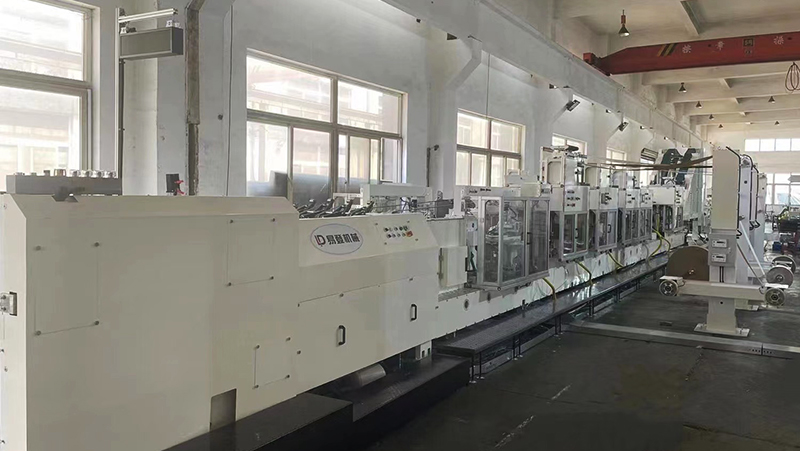Ultimate Guide to Paper-Plastic Composite Bag Making Machines: Features, Benefits, and Applications
Release time:2025-05-01 Classification:Knowledge
Paper-plastic composite bag making machines are specialized industrial equipment designed to manufacture eco-friendly, durable packaging solutions. These machines combine layers of paper and plastic (typically polypropylene or polyethylene) to create versatile bags widely used in agriculture, food, construction, and chemical industries. This article explores the technology, operational advantages, and key considerations for investing in these machines.

How Paper-Plastic Composite Bag Making Machines Work
The production process involves multiple integrated systems:
- Material Feeding & Lamination: Rolls of kraft paper and plastic film are fed into the machine. Heat and pressure bond them into a composite material, ensuring strength and moisture resistance.
- Printing (Optional): High-precision flexographic or gravure printing units apply logos, labels, or safety instructions.
- Bag Formation: The laminated material is cut, folded, and sealed into bags using ultrasonic or heat-sealing technology for leak-proof edges.
- Handles & Gussets (Optional): Machines can integrate reinforced handles or side gussets for enhanced load capacity.
Key Features of Modern Machines
- Automation: PLC-controlled systems ensure consistent output with minimal manual intervention.
- Customization: Adjustable parameters support varying bag sizes (5–50 kg), layer thickness, and print designs.
- Energy Efficiency: Advanced heating elements and servo motors reduce power consumption.
- Durability: Stainless steel components and precision engineering minimize wear in high-volume production.
Benefits of Paper-Plastic Composite Bags
- Eco-Friendly: Biodegradable paper layers reduce plastic usage, aligning with global sustainability goals.
- High Strength: The composite structure withstands heavy loads, sharp edges, and harsh transport conditions.
- Barrier Protection: Plastic layers prevent moisture, dust, and UV damage, ideal for sensitive contents like fertilizers or food.
Applications Across Industries
- Agriculture: Packaging seeds, animal feed, or fertilizers.
- Construction: Storing cement, sand, or dry chemicals.
- Food & Retail: Packaging flour, sugar, or pet food with FDA-compliant materials.
Choosing the Right Machine: Key Considerations
- Production Capacity: Machines range from 20–200 bags per minute; select based on demand.
- Material Compatibility: Ensure compatibility with recycled paper or biodegradable plastics if required.
- After-Sales Support: Opt for suppliers offering training, spare parts, and technical assistance.
Paper-plastic composite bag making machines enable manufacturers to produce cost-effective, environmentally responsible packaging at scale. By prioritizing automation, flexibility, and robust construction, these machines meet the growing demand for sustainable solutions in diverse sectors. Investing in advanced technology ensures long-term competitiveness while addressing regulatory and consumer preferences for greener packaging alternatives.






